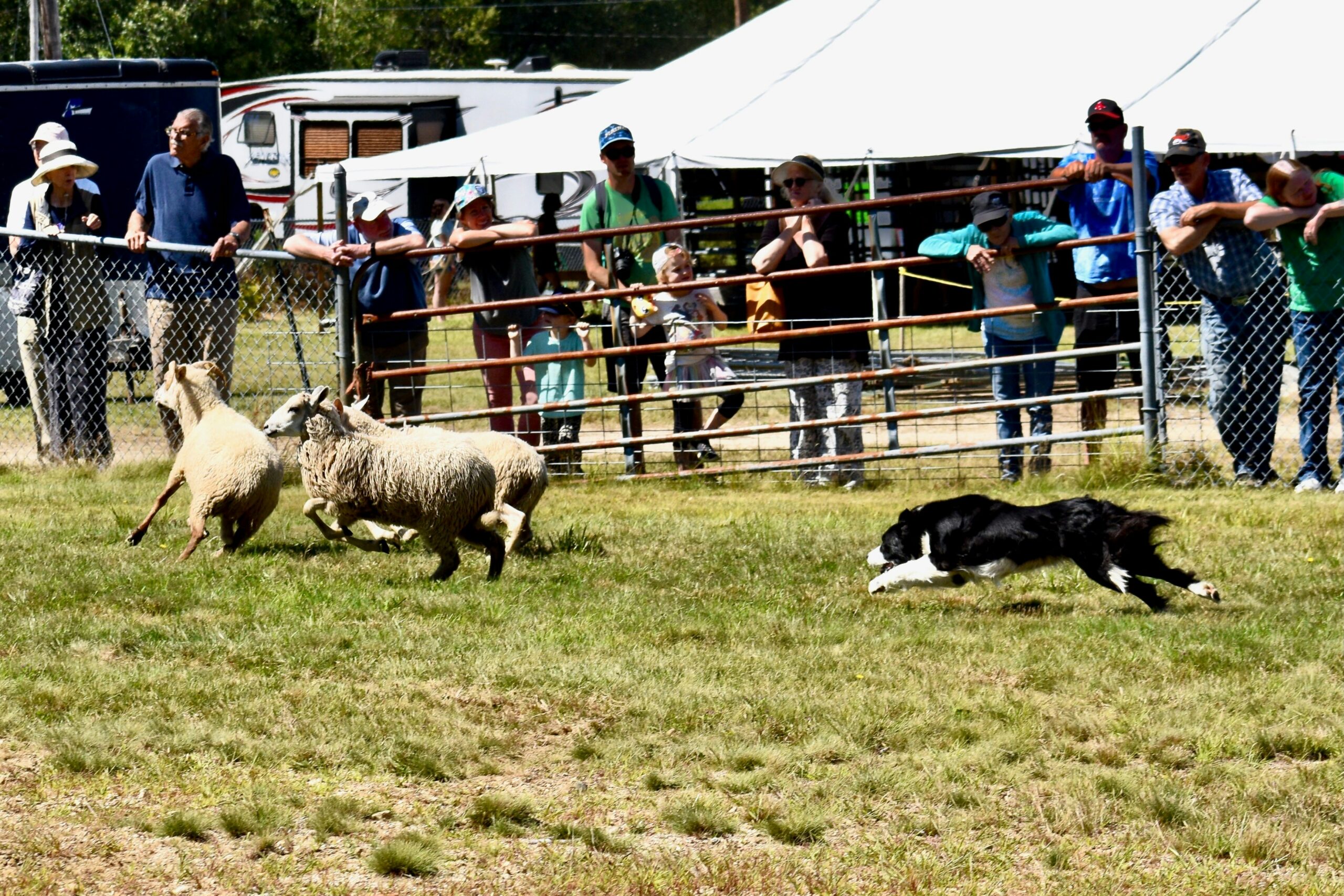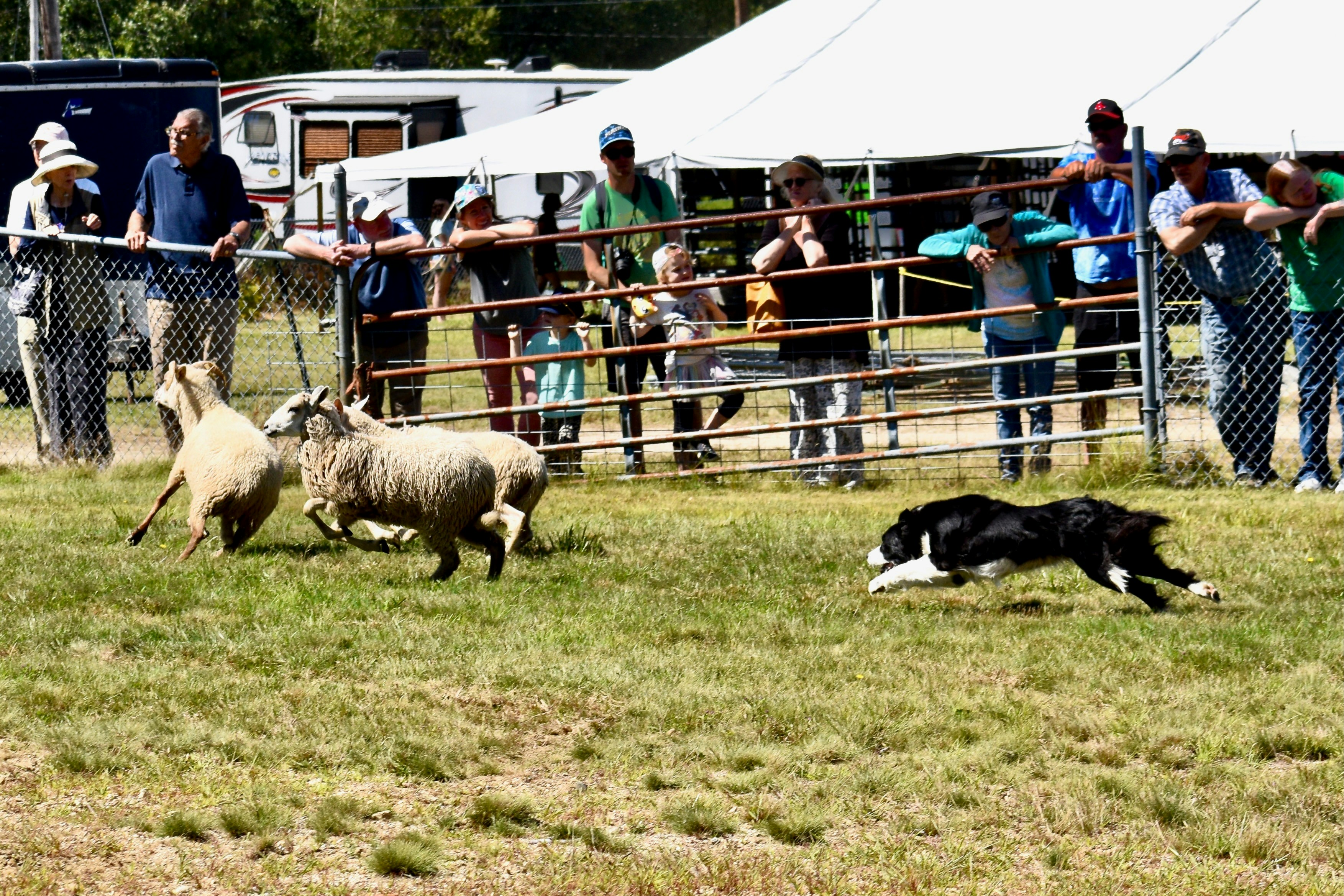
Introduction: History and Curiosities of the Sheepdog
The sheepdog has been an invaluable companion in rural life since ancient times. Its history is deeply intertwined with that of human civilization, as these animals were domesticated to help herd sheep and cattle. It is believed that the first herding dogs appeared more than 15,000 years ago, when humans began gathering and tending livestock. As societies evolved, so did the breeds developed specifically to meet the demands of farming. From the energetic Border Collie to the strong German Shepherd, each herding breed was carefully bred to display unique skills that support farmers and shepherds in their daily work.
Throughout history, herding dogs have proven their intelligence and loyalty—qualities that have been essential to their role as human partners. Their ability to work closely with people has led to countless success stories in livestock management. In Scotland, for instance, sheepdogs were often credited with efficiently managing large flocks of sheep, playing a vital role in the rural economy. This kind of symbiotic partnership has cemented the importance and respect these dogs hold in agricultural culture.
An interesting fact is that herding dogs not only have impressive physical skills but also a powerful pack instinct. This allows them to bond not just with livestock but also with their human handlers. The relationship is built on communication and trust, highlighting the importance of proper training. Understanding the history and characteristics of herding dogs provides essential context when beginning their herding education.
What Is a Herding Dog and Its Role?)
A herding dog is a breed specifically developed to assist in managing livestock, primarily sheep and cattle. These dogs—often considered the backbone of modern livestock farming—possess a unique combination of instinct, intelligence, and athletic ability that makes them perfectly suited for the job. Unlike many other dog types, herding dogs not only have a strong prey drive but also the ability to work in harmony with the handler, becoming essential partners in efficient livestock management.
The duties of a herding dog vary depending on the needs of the farm. Their main role is to guard and control the herd, ensuring that sheep or cattle stay within a designated area while protecting them from potential predators. In addition, herding dogs are skilled at guiding animals from one location to another, using agility and speed to control the group’s movement. This precision control relies on techniques such as “approaching” and “focusing,” allowing the animals to feel both safe and guided.
It’s important to note that not all dogs are suited to herding work. Breeds such as the Border Collie, German Shepherd, and Berger Picard possess the right temperament and skill set for this demanding environment. Along with their ability to handle livestock, these dogs are remarkably intelligent, capable of learning complex commands and adapting to changing work conditions. As a result, herding dogs are an indispensable tool for farmers, playing a vital role in the sustainability and efficiency of modern agriculture.
Most Popular Breeds for Sheepdog Training
Training herding dogs is essential for the effective management of sheep and cattle. Among the most renowned herding breeds are the Border Collie, Australian Shepherd, Australian Cattle Dog, and Kelpie. Each of these breeds has unique characteristics that make them perfectly suited for livestock herding.
The Border Collie is famous for its exceptional intelligence and strong herding instinct. This breed is highly trainable, capable of performing complex tasks with precision. Their endless energy and agility make them one of the best herding dogs in the world. They also excel in communication and easily follow commands — a crucial trait in demanding farm environments.
Another popular breed is the Australian Shepherd,which, despite its name, originated in the United States. This breed is known for its incredible speed, stamina, and ability to handle livestock with precision. Their balanced temperament allows them to work harmoniously with both humans and other animals. They have a natural herding drive and an impressive ability to adapt to different farm environments.
The Australian Cattle Dog is another outstanding choice for herding. Highly active and loyal, these dogs possess sharp intelligence that makes them top performers in cattle work. Their physical endurance allows them to work long hours in tough conditions. They’re also naturally protective of their owners and livestock, making them invaluable partners in daily herding operations.
Lastly, Kelpie is another iconic breed in the world of herding. Known for their agility and boundless energy, Kelpies can work with both sheep and cattle, easily adapting to different terrains and climates. Their alert focus and strong problem-solving skills make them highly effective, even in the most challenging conditions.
Core Principles of Herding Dog Training
Training a herding dog is a detailed process that requires a solid understanding of several core principles. One of the most critical aspects is obedience. Herding dogs must learn to follow specific commands and respond consistently to their handler, ensuring safe and effective control of the herd. Obedience not only guarantees safety for the livestock but also for the dog itself and its working environment.
Another essential principle in herding dog training is building a strong bond between human and animal. This connection is developed through consistent communication and trust. A dog that feels bonded with its handler is more likely to follow instructions and work cooperatively. This not only improves herding efficiency but also fosters a positive relationship that benefits both the dog and the handler.
It is equally important to create a positive training environment. Methods that emphasize positive reinforcement are the most effective and ethical. Using rewards such as treats, praise, or play motivates the dog and strengthens desired behaviors. In herding dog training, punishment should be avoided, as it can create fear and mistrust, negatively affecting performance. By combining obedience, a strong human-animal bond, and a positive learning environment, handlers can develop highly skilled and reliable herding dogs.
Differences Between Sheep and Cattle Herding
While the basic principle of herding remains the same —guiding and controlling animal movement— there are key differences between working with sheep and with cattle. Each type of herding requires distinct skills and strategies, both from the dog and the handler.. Sheep herding usually demands greater precision and control. Sheep are sensitive animals that move quickly in flocks, so herding dogs must work gently, using subtle movements and keeping the right distance to avoid frightening them. In this environment, breeds like the Border Collie excel thanks to their ability to use eye contact and body positioning as primary tools for guiding the herd.
On the other hand, cattle herding demands strength, confidence, and a more assertive attitude. Cattle are larger and often less docile than sheep, so dogs must have a brave and determined character. Breeds such as the Australian Cattle Dog or the Kelpie are commonly used for this task, as they can effectively control even large animals. Their quick reflexes and ability to anticipate livestock movements are essential to prevent accidents and maintain group balance.
In summary, the type of herding determines the training approach. While sheep herding focuses on gentleness and long-distance control, cattle herding prioritizes firmness and quick reaction time. Understanding these differences is key to adapting training techniques and achieving the best results.
Stages of Herding Dog Training
Training a herding dog involves several stages that gradually develop its skills. These phases include basic obedience, socialization, introduction to livestock, and advanced herding techniques. In the initial stage,the dog learns basic obedience commands such as “come,” “stay,” or “heel.” This foundation is essential for building clear communication between the dog and its handler. Without strong obedience, progressing to more complex herding tasks becomes impossible.
Next, during the socialization phase,the dog becomes familiar with other animals, people, and environments. This helps reduce stress and improves focus while working in the field. A well-socialized dog will be more balanced and confident.
The next stage involves introducing the dog to livestock. control del rebañoAt this point, the dog starts interacting with sheep or cattle under close supervision. It learns to keep a safe distance, move around the herd, and respond to voice commands or whistles. This stage is crucial for refining the dog’s natural herding instinct and channeling it effectively.
Finally, during the advanced training stage, comandos de voz the herding dog learns to work independently and make its own decisions. The trainer reinforces skills such as directional movement, livestock correction, and teamwork with other herding dogs. A complete and balanced training process ensures the dog becomes a true partner in rural work.
Practical Tips and Common Mistakes in Herding Dog Training
Herding dog training is a process that requires patience, consistency, and a deep understanding of canine behavior. It’s not just about teaching commands but about building a relationship based on trust and communication. The following practical tips will help you optimize the training process and avoid the most common mistakes.1. Establish a consistent routine: Consistency is the foundation of learning. Schedule daily training sessions, preferably at the same time, and keep them short but frequent. This helps your dog stay focused and absorb new skills gradually.2. Use positive reinforcement: Dogs learn best when they feel motivated. Reward correct behavior with treats, affection, or verbal praise. Avoid physical punishment or harsh tones, as these create fear and distrust, ultimately reducing your herding dog’s performance.
3. Be patient and realistic: Every dog learns at its own pace. Some pick up commands quickly, while others need more time. Patience is key — a pressured or confused dog can lose interest or become stressed.4. Socialize from an early age: A well-socialized herding dog adapts better to different environments and livestock types. From puppyhood, expose your dog to various sounds, people, and animals. This builds confidence and reduces impulsive reactions during work.
One of the most frequent mistakes is inconsistency from the handler. Changing commands or voice tones can easily confuse the dog. Another common error is skipping rest periods — even energetic herding dogs need downtime to avoid physical and mental exhaustion.
Finally, never underestimate the power of play. Training shouldn’t feel like a chore but rather an activity that strengthens the bond between human and dog. Playful moments reinforce connection, improve communication, and make learning more lasting and enjoyable.
The Importance of Animal Welfare and Ethics in Dog Training
Animal welfare is one of the most important pillars in herding dog training. A dog that feels safe, understood, and motivated learns faster and works more effectively. Respecting its nature, limits, and emotional well-being must form the foundation of every training process.Ethical training is based on positive reinforcement, clear communication, and empathy. Instead of punishing mistakes, correct behaviors are rewarded, encouraging voluntary cooperation. This approach not only enhances a herding dog’s performance but also strengthens the bond of trust between the handler and their working partner.
Herding dogs are highly intelligent and sensitive animals. Trying to impose obedience through fear or pain can cause insecurity, stress, and even aggression. In contrast, a dog trained with respect and patience develops a balanced, confident, and proactive attitude toward its work.Moreover, an ethical approach benefits not only the dog but also the livestock it works with. A well-trained and emotionally stable dog handles sheep or cattle calmly and precisely, reducing the risk of injuries and herd stress. In this way, animal welfare becomes a shared value between the dog, the farmer, and the animals under their care.
Finally, ethics in training also means recognizing each dog’s individual needs. Not all dogs learn at the same pace or share the same energy levels and temperament. Adapting training techniques to the character of each animal shows respect and professionalism — and it’s the key to achieving lasting, satisfying results.
Conclusion: Strengthening the Human-Dog Bond
The relationship between humans and herding dogs is one of the oldest and most meaningful examples of interspecies cooperation. For thousands of years, these dogs have been not only tireless workers but also loyal companions who embody the union of intelligence, instinct, and trust.The bond formed between a farmer and their herding dog goes far beyond daily work. It’s a connection built on mutual respect, understanding, and constant communication. When both learn to read and anticipate each other, they become a harmonious team capable of managing livestock with precision and calmness.
Positive training and ethical treatment are essential tools for strengthening this relationship. A dog that works out of trust and motivation, rather than fear, shows a natural willingness to cooperate. In this way, training becomes an act of collaboration, not coercion.
Patience and continuous learning are key to maintaining a strong bond over time. Both human and dog evolve through experience; every workday and every challenge overcome strengthens their connection. This shared growth is what makes herding such a deeply human and special practice.
Ultimately, the herding dog is not just a working tool but a companion who embodies the very essence of livestock farming. Strengthening the human-dog bond means recognizing that behind every well-guided herd lies a story of respect, dedication, and mutual love.
References:FAO (Food and Agriculture Organization of the United Nations) – Information on sustainable livestock practices and ethical herding management.American Kennel Club (AKC) – Official breed descriptions, temperament insights, and herding abilities.Fédération Cynologique Internationale (FCI) – International classification of dog breeds and behavioral standards.“Training the Sheep Dog” – Barbara Collins – Practical guide on traditional and modern sheepdog training techniques.📎 These sources ensure reliability and factual accuracy, providing a trustworthy foundation for this article.



